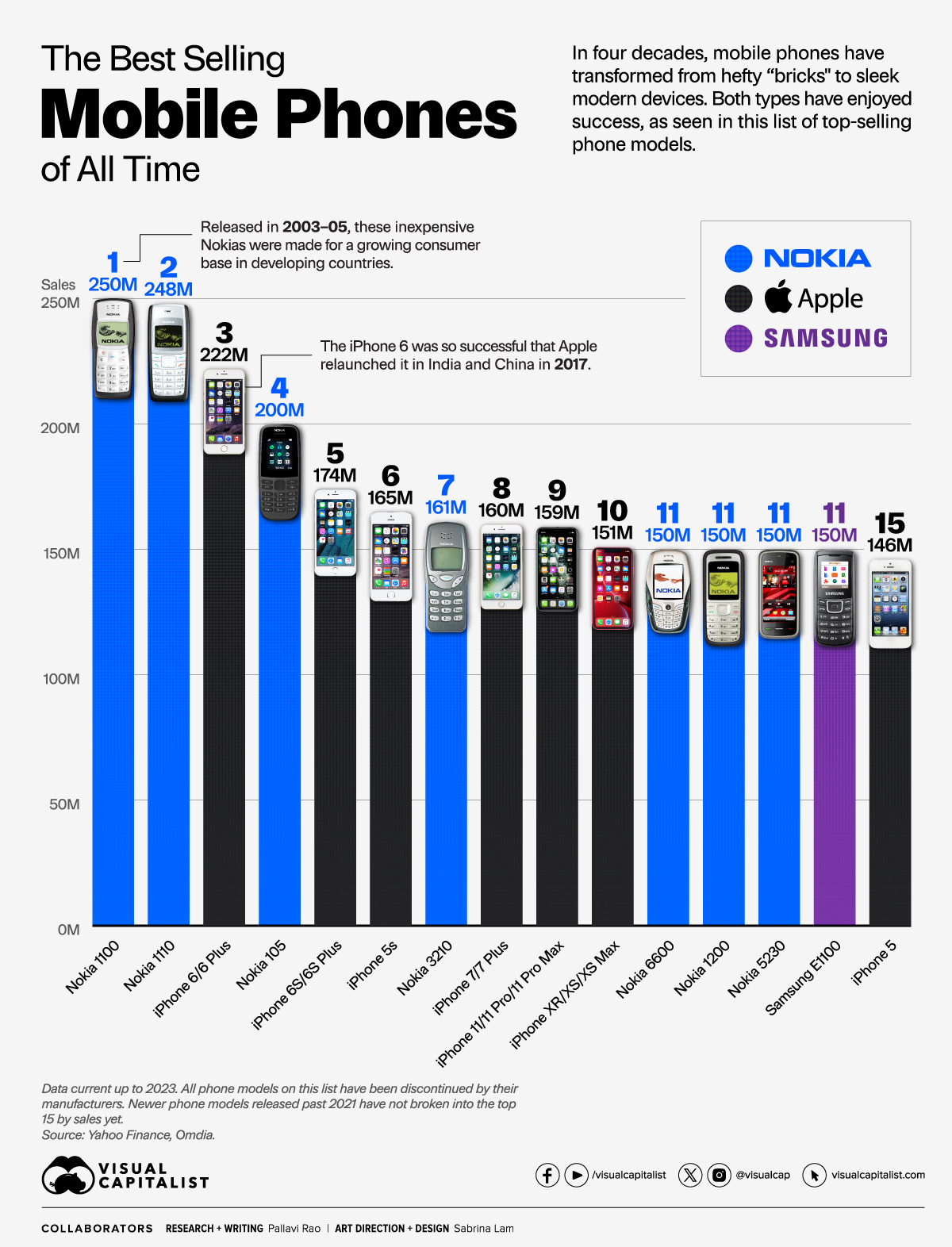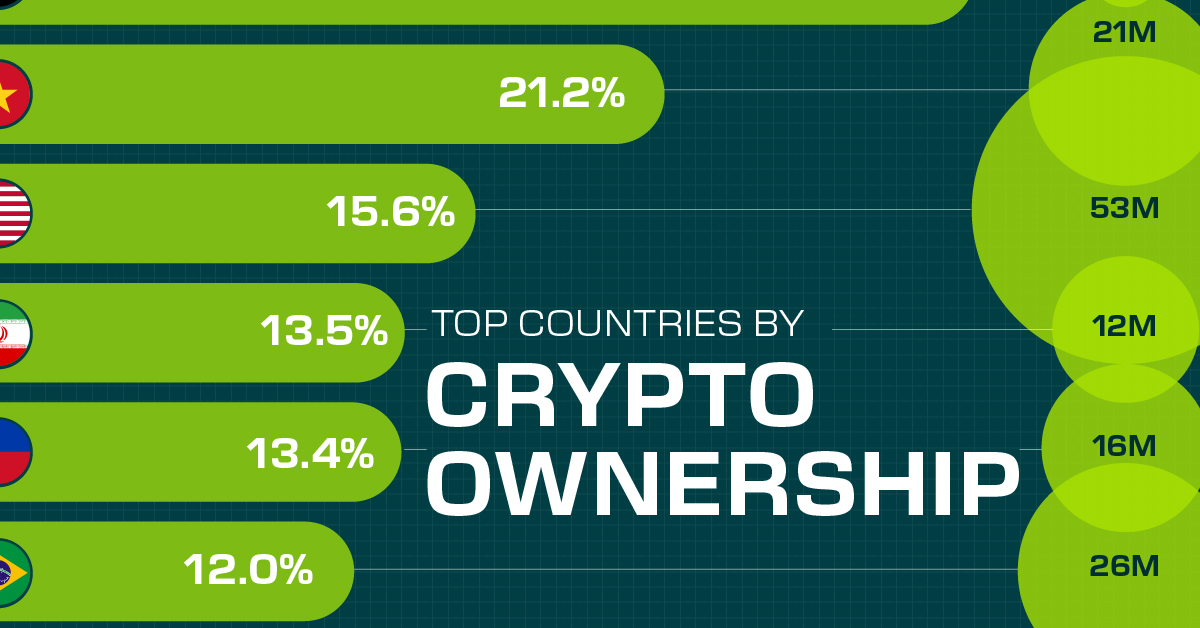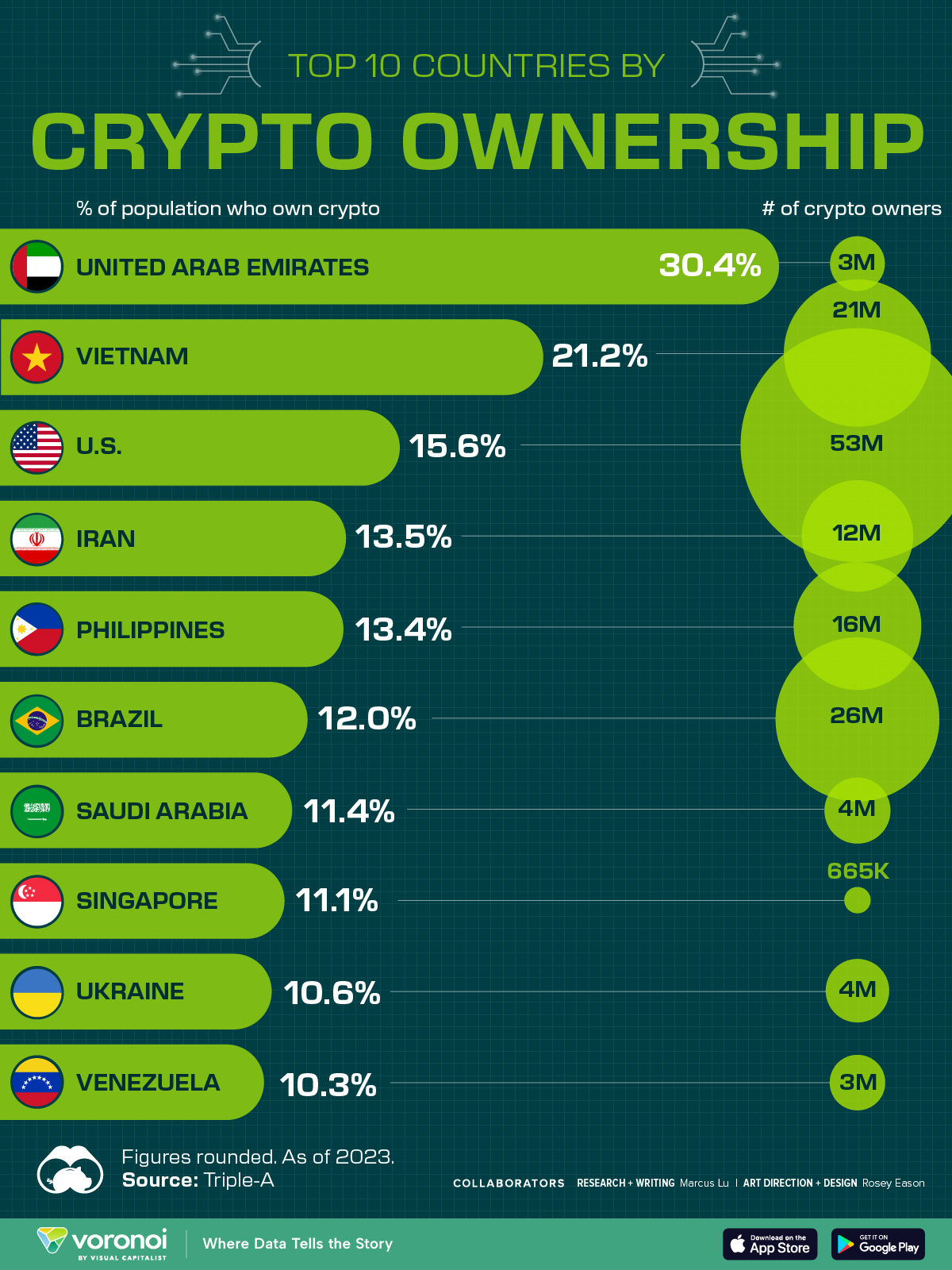Technology
Ranked: The 15 Best-Selling Mobile Phones of All Time

Ranked: The Best-Selling Mobile Phones of All Time
In 2021, the world had 7.1 billion mobile phone users, roughly 90% of the global population. The mobile phone is now one of humanity’s most ubiquitous pieces of technology, and these sleek modern devices are a far cry from their hefty, brick-like predecessors.
But what are the most sold mobile phones of all time?
Using data from Wikipedia, Yahoo Finance, and tech analyst firm Omdia, we chart out the sales of the mobile phones that have enjoyed unmitigated success.
The Most Sold Mobile Phones of All Time
Heading the list of most sold phones ever is the much-beloved Nokia 1100, recording more than 250 million sales in six years before being discontinued in 2009.
Despite existing at the same time as the first mass-market smartphones (the Nokia E-series and then the iPhone), the 1100s’ price, focus on basic functionality, and pocket size made it a favorite in developing countries.
At second place, another variant of the same line, the Nokia 1110, sold 248 million units.
| Rank | Mobile Phone | All-Time Sales |
|---|---|---|
| 1 | Nokia 1100 | 250M |
| 2 | Nokia 1110 | 248M |
| 3 | iPhone 6/6 Plus | 222M |
| 4 | Nokia 105 Series | 200M |
| 5 | iPhone 6S/6S Plus | 174M |
| 6 | iPhone 5s | 165M |
| 7 | Nokia 3210 | 161M |
| 8 | iPhone 7/7 Plus | 160M |
| 9 | iPhone 11/11 Pro/ 11 Pro Max | 159M |
| 10 | iPhone XR/ XS/XS Max | 151M |
| 11T | Nokia 6600 | 150M |
| 11T | Nokia 1200 | 150M |
| 11T | Nokia 5230 | 150M |
| 11T | Samsung E1100 | 150M |
| 15 | iPhone 5 | 146M |
| 16 | Nokia 2600/ 2610/2626/2630 | 135M |
| 17T | Motorola RAZR V3 | 130M |
| 17T | Nokia 1600/ 1650/1661 | 130M |
| 19 | Nokia 3310 | 126M |
| 20 | iPhone 8/8 Plus | 125M |
Ranked third is the iPhone 6 and 6 plus, with a combined 222 million units. Their 4.7 and 5.5-inch screens ushered in the era of large screen smartphones, and they remain Apple’s best-selling iPhones and the best-selling smartphones of all time. In fact, the iPhone 6 was so popular it was re-released in 2017 at a mid-range price level.
The next 17 ranks of the most sold phones are split between Nokias and iPhones, with only the Samsung E1100 (ranked 11th) and and the Motorola Razr V3 (ranked 17th) managing to break the duopoly.
Of course, Nokia and Apple have had very different fortunes in the last decade.
After riding telecom market deregulation, first in Europe, and then in Asia, Nokia failed the transition to smartphones and quickly lost ground to Apple, Google and Samsung.
Microsoft purchased Nokia’s mobile phone business in 2014 to boost their own Windows Phone, but when that failed, Nokia’s phone business was once again sold to HMD Global. Today, HMD Global still makes Nokia phones (including revamps of earlier models) which run on Android OS.
The Modern Mobile Phone Rivalry: Apple vs. Samsung
It’s hard to believe how quickly Apple’s core business has changed from personal computing to mobile phones.
In 2009 iPhone sales contributed about 25% to the company’s revenues. By 2023, half of Apple’s $383 billion revenue came from their phones.
The iPhone routinely dominates the top 10 best-selling phones every year, as evidenced from research by tech analysts Omdia.
| 2022 Best Sellers | 2022 Sales | 2023 Best Sellers | 2023 Sales |
|---|---|---|---|
| iPhone 13 | 55M | iPhone 14 Pro Max | 31M |
| Galaxy A13 | 35M | iPhone 14 | 26M |
| iPhone 13 Pro Max | 29M | iPhone 14 Pro | 24M |
| iPhone 14 Pro Max | 23M | iPhone 13 | 22M |
| iPhone 11 | 21M | Galaxy A14 | 20M |
| iPhone 13 Pro | 19M | Galaxy A14 5G | 14M |
| iPhone 14 Pro | 18M | Galaxy A54 5G | 14M |
| Galaxy A03 Core | 18M | Galaxy S23 Ultra | 13M |
| iPhone 14 | 17M | Galaxy A04e | 11M |
| Galaxy A03 | 16M | Redmi 12C | 11M |
Source: Data shared by Omdia. Note: 2023 numbers are current up to Q3, 2023.
However, Korean electronics behemoth Samsung’s sales figures aren’t exactly lackluster either. And while the two companies’ business models differ quite a bit, their flagship devices are routinely put up against each other: Samsung winning on battery life and mid and lower-range options, and Apple winning on optimization and security. Both brands have stellar cameras.
And while Apple rules the U.S. smartphone market (52% market share), Samsung edges them out globally with a 22% market share, compared to Apple’s 19%.
Technology
Countries With the Highest Rates of Crypto Ownership
While the U.S. is a major market for cryptocurrencies, two countries surpass it in terms of their rates of crypto ownership.

Countries With the Highest Rates of Crypto Ownership
This was originally posted on our Voronoi app. Download the app for free on iOS or Android and discover incredible data-driven charts from a variety of trusted sources.
This graphic ranks the top 10 countries by their rate of cryptocurrency ownership, which is the percentage of the population that owns crypto. These figures come from crypto payment gateway, Triple-A, and are as of 2023.
Data and Highlights
The table below lists the rates of crypto ownership in the top 10 countries, as well as the number of people this amounts to.
| Country | % of Population Who Own Crypto | # of Crypto Owners |
|---|---|---|
| 🇦🇪 United Arab Emirates | 30.4 | 3M |
| 🇻🇳 Vietnam | 21.2 | 21M |
| 🇺🇸 U.S. | 15.6 | 53M |
| 🇮🇷 Iran | 13.5 | 12M |
| 🇵🇭 Philippines | 13.4 | 16M |
| 🇧🇷 Brazil | 12 | 26M |
| 🇸🇦 Saudi Arabia | 11.4 | 4M |
| 🇸🇬 Singapore | 11.1 | 665K |
| 🇺🇦 Ukraine | 10.6 | 4M |
| 🇻🇪 Venezuela | 10.3 | 3M |
Note that if we were to rank countries based on their actual number of crypto owners, India would rank first at 93 million people, China would rank second at 59 million people, and the U.S. would rank third at 52 million people.
The UAE Takes the Top Spot
The United Arab Emirates (UAE) boasts the highest rates of crypto ownership globally. The country’s government is considered to be very crypto friendly, as described in Henley & Partners’ Crypto Wealth Report 2023:
In the UAE, the Financial Services Regulatory Authority (FSRA-ADGM) was the first to provide rules and regulations regarding cryptocurrency purchasing and selling. The Emirates are generally very open to new technologies and have proposed zero taxes for crypto owners and businesses.
Vietnam leads Southeast Asia
According to the Crypto Council for Innovation, cryptocurrency holdings in Vietnam are also untaxed, making them an attractive asset.
Another reason for Vietnam’s high rates of ownership could be its large unbanked population (people without access to financial services). Cryptocurrencies may provide an alternative means of accessing these services without relying on traditional banks.
Learn More About Crypto From Visual Capitalist
If you enjoyed this post, be sure to check out The World’s Largest Corporate Holders of Bitcoin, which ranks the top 12 publicly traded companies by their Bitcoin holdings.
-

 Markets5 days ago
Markets5 days agoVisualizing Global Inflation Forecasts (2024-2026)
-

 Green2 weeks ago
Green2 weeks agoThe Carbon Footprint of Major Travel Methods
-

 United States2 weeks ago
United States2 weeks agoVisualizing the Most Common Pets in the U.S.
-

 Culture2 weeks ago
Culture2 weeks agoThe World’s Top Media Franchises by All-Time Revenue
-

 voronoi1 week ago
voronoi1 week agoBest Visualizations of April on the Voronoi App
-

 Wealth1 week ago
Wealth1 week agoCharted: Which Country Has the Most Billionaires in 2024?
-

 Business1 week ago
Business1 week agoThe Top Private Equity Firms by Country
-

 Jobs1 week ago
Jobs1 week agoThe Best U.S. Companies to Work for According to LinkedIn












